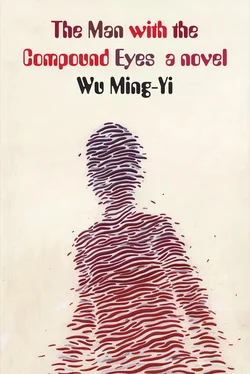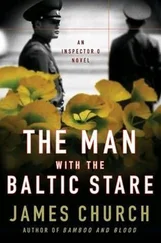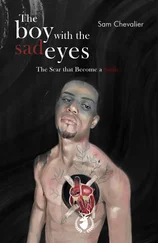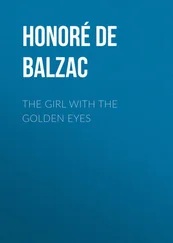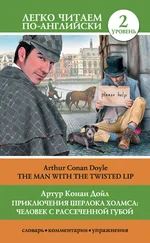Reiko gave Alice a Skype call after learning of her situation from a fellow scholar. At first Alice refused even to consider the therapy, but then something Reiko said changed her mind. “The dream grabber won’t solve your problems for you, but it seems that quite a number of people discover little clues or issues that make life worth living again.”
Despite years of correspondence, Alice’s trip to Tokyo was the first time they met in the flesh. Reiko had a round face, a medium build and a very Japanese smile. A bit eccentric, she wore a pair of glasses with molded plastic frames (though for all Alice could tell they could be expensive handmade spectacles) along with a pair of rather sexy fishnet stockings. To Alice the outfit seemed extremely mismatched. Surprisingly few scholars floating around in fishnets, are there?
The therapy was supposed to take a whole week. On the first day a session with a psychologist was scheduled. That evening, Alice stayed at the clinic, which was just like being in a five-star hotel, except with brainwave detectors in the pillows and the mattress. The second and third days it was just like being on vacation. She revisited Yoyogi Park and the Ueno Zoo. She also wanted to go back to the Tamagawa Zoo, where she had taken Toto, but unfortunately they were closed for some animal escape drill. On the fourth day Alice’s dreamscape data from the first three nights was compiled.
Alice regretted coming as soon as she saw her dreamscape. The doctor and technicians could not decipher the dots and lines on the screen, but Alice could. That is the way memory works: often you’re the only one who can recognize what something means. The dreamscape viewing was supposed to be followed by a session with an experienced counselor, but Alice simply said farewell to Reiko and caught a flight back to Taiwan instead. Reiko did not particularly ask Alice why she was leaving so suddenly when she saw her off at the airport. Alice just noticed she had changed into a pair of extremely eye-catching purple pantyhose.
Alice woke up from the dream they’d recorded in the clinic in Tokyo. Still half asleep, she saw from the clock over the bed that it was about four in the morning. Ohiyo was sound asleep. Do cats ever need a lot of sleep! Ohiyo was sleeping by a digital album she had knocked over. Alice did not have to look to know it was the album beginning with one of Toto’s baby pictures. Alice tried stretching out her hand to get at it without waking Ohiyo but could not get at it. She could only play the images she knew only too well in her mind’s eye. It occurred to her that Toto might just be sealed off in a deathless world somewhere, that he might be alive as if in a photograph, in a place death could never enter. Was Toto somewhere like that, carrying his specimen case as he searched for something he had never seen before?
8. Rasula, Rasula, Will You Really Go to Sea?
Before Atile’i went to sea, Rasula prepared a bottle of fine kiki’a wine, a local delicacy women and children made by letting the rhizome of a certain tuber ferment in their mouths into a viscid liquor. The process sometimes required three days of chewing. The taste of the wine varied with the smell and composition of the saliva of the person who chewed it. The mellow wine from Rasula’s mouth had been the toast of the island since she was a girl. Mixed with the starch of the tuber, her saliva produced an aroma men found captivating. Instead of making you drunk, it tended to induce the most indescribable palpitations. Some men who had drunk it even claimed that their futures had flashed before their eyes.
After Atile’i had shot his seed, Rasula took out the wine she’d chewed for him and advised him to sip her wine slowly so as to remember her smell, the look in her eyes, the warmth of her nether parts.
But where was Atile’i now?
The men of the island all desired Rasula but none dared make a move on her. Nobody knew who her father was. Her Yina (the Wayo Wayoan word for mother) Saliya’s weaving was the best on the island, but, lacking the protection of a husband, Saliya had no way to obtain an allotment of land, and women were not allowed to go to sea. The only way she could get land, fish and other forms of upkeep was to do public service in the village. Mainly, she wove saltgrass sandals for the islanders. Rasula would often help Saliya pick vines in the woods and collect saltgrass by the shore: the vines were for the sole, the saltgrass for the upper. Saliya’s weaving talents were not limited to sandals; she could also make fishnets, nets that not even the Ima Ima fish, the strongest fish that swam in the waters around the island, could escape. Saliya might well have woven enough nets over the years to cover the entire island.
Men would often take a detour past Saliya’s house after a hard day of fishing and help with repairs around the house, maybe leaving a fish or two, or maybe a sea cucumber or a tasty octopus. It was only after she had her first period that Rasula realized that they were actually there for her mother’s hands, not only for the sandals, the fishnets or out of a desire to tell stories. Rasula had heard their tributes to her mother’s hands:
They revive the dry grass .
They can calm a fierce squall .
When Saliya was young she was as beautiful as Rasula, or even more lovely, because Saliya had a pure, Wayo Wayoan beauty. Saliya in Wayo Wayoan meant “a spine with a graceful delphine arc.” As a maiden, she could simply sit at the seashore facing away from the village with her hair hanging down her back and it was enough to make the island’s heart break.
Rasula’s favorite activities were watching seagulls bearing the moon aloft and collecting freshly molted crab shells, but now she was like a seabird with wounded wings, gazing at the sea but unable to leave the island. Saliya could totally understand what Rasula was feeling. She quietly regarded her child, suspecting that another little spark of life had appeared within her soul. Being unable to spend a lifetime with the man she loved was the fate of many a Wayo Wayoan woman, but to bear his child was the grace of Kabang. This was because the child might be a boy, and a boy could help them start a new family.
One day when mother and daughter were sitting in the doorway weaving sandals, Rasula suddenly struck up a conversation.
“Yina, why aren’t women allowed to go to sea?”
“This is the rule of the ancestors, the law of nature. Women can only go to the seashore to collect shellfish. But you must never forget that shellfish with spines are not to be touched.”
“Why did they make this rule, and what if one breaks it?”
“Oh, my dear Nana (the Wayo Wayoan word for daughter), you well know that a girl who breaks this rule would turn into a spiny urchin which none would dare approach.”
“Have you actually ever seen someone change into a spiny urchin?”
“There are urchins everywhere.”
“No, Yina, I mean have you ever seen a real live person turn into an urchin?”
“No, Nana, and neither has anyone else, for she would sink into the sea before the change comes upon her.”
“Yina, I don’t believe you.” Rasula heaved a long sigh, with a faraway look in her eye. Saliya looked at Rasula and in her heart answered her sigh, thinking: It wasn’t my wish for you to have such a pair of pearly eyes, daughter of mine.
“Yina, I don’t believe you. I want to build a talawaka of my own.”
“What? No, you can’t. A talawaka is not for a woman to own.”
“I want to build a talawaka .”
Saliya knew that when Rasula had made up her mind she was as irretrievable as a stone sunk to the bottom of the sea, and so she said nothing more.
Читать дальше
